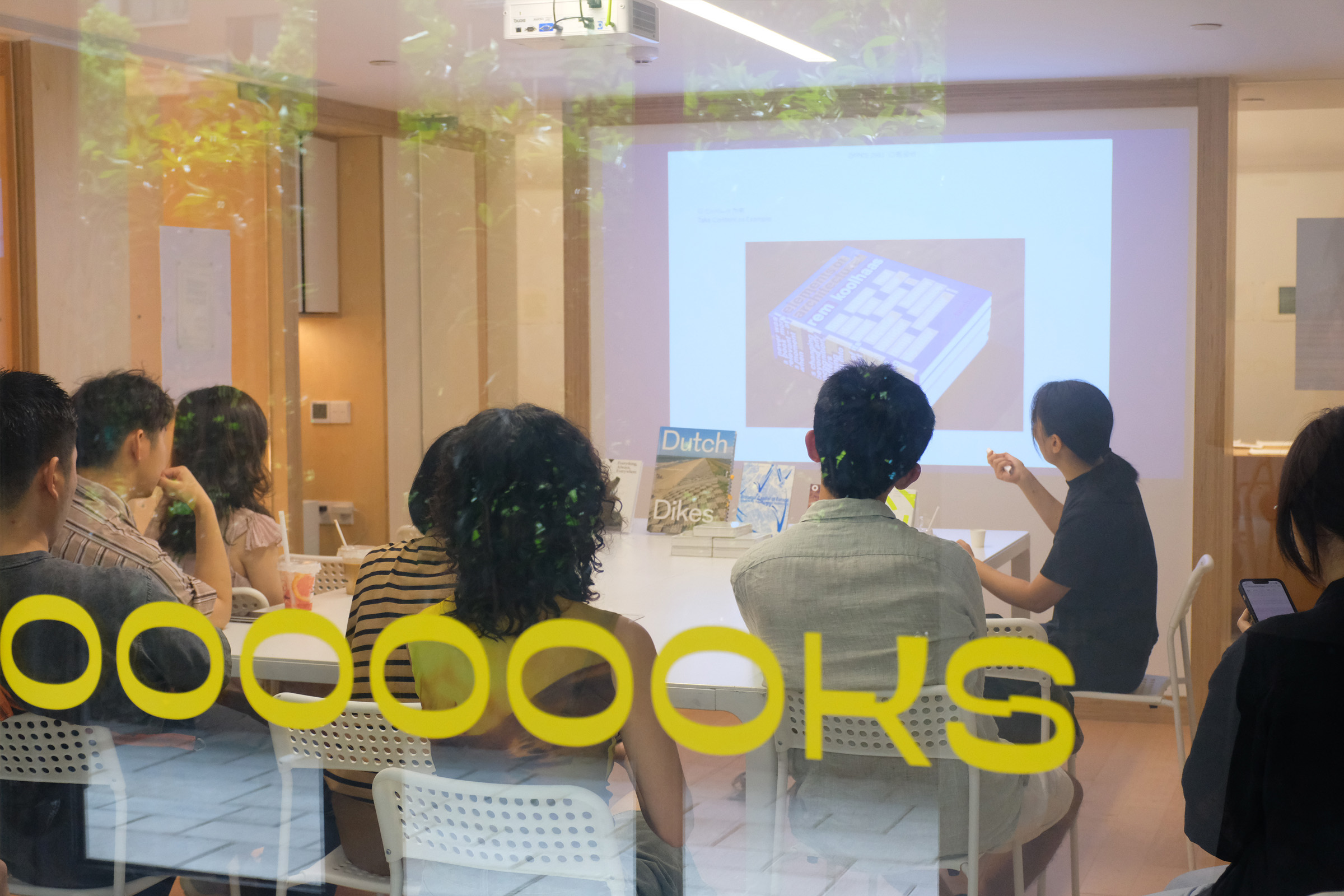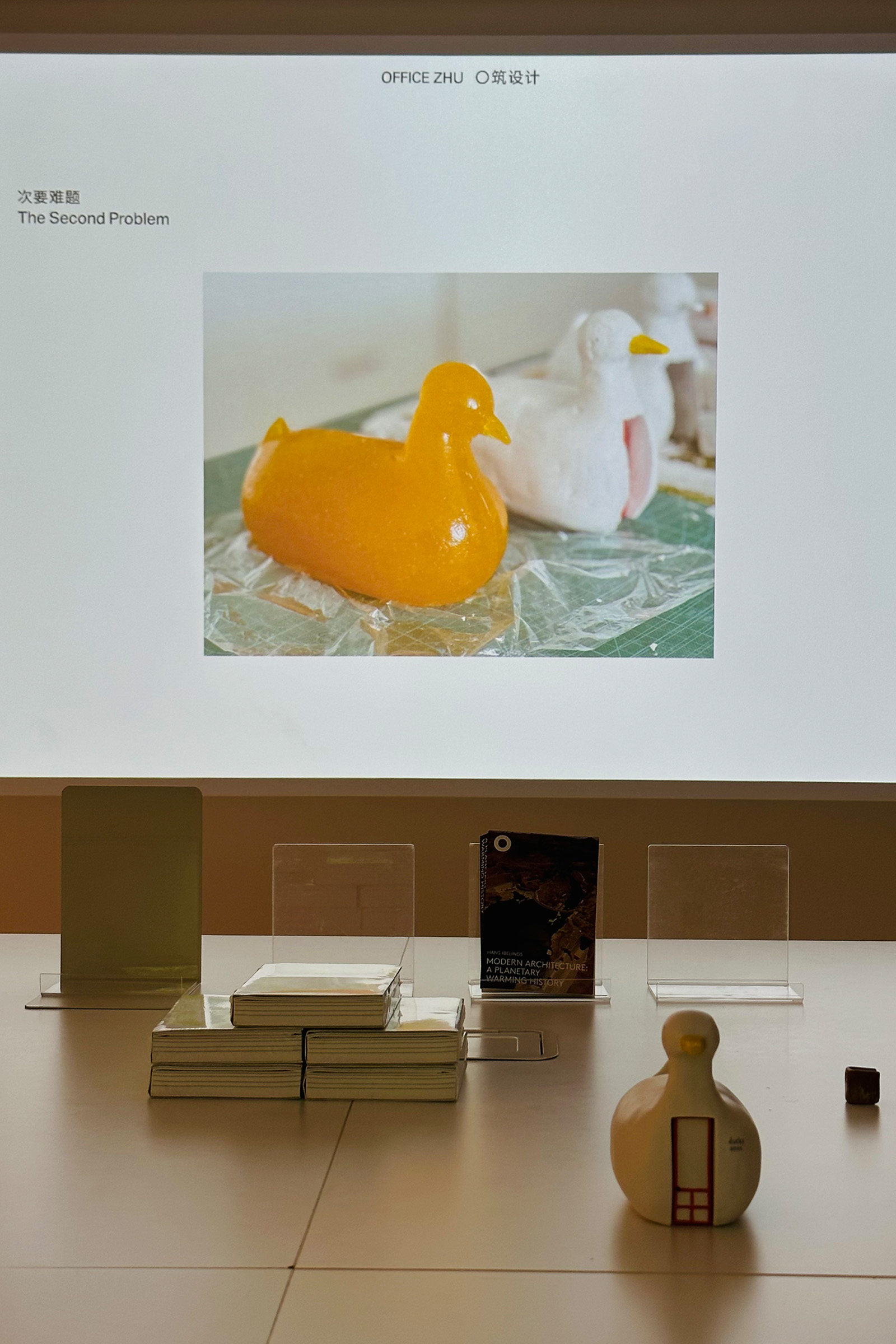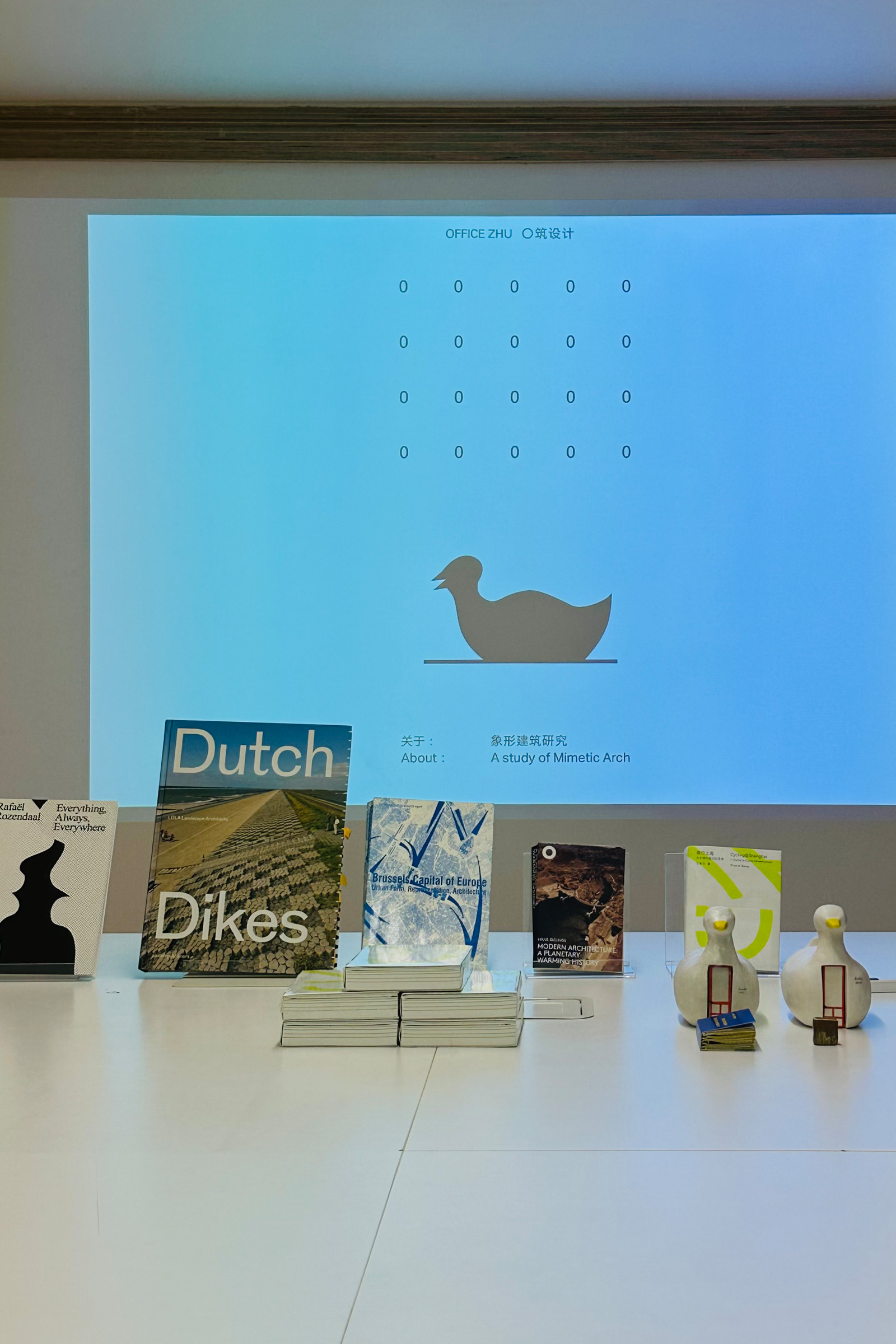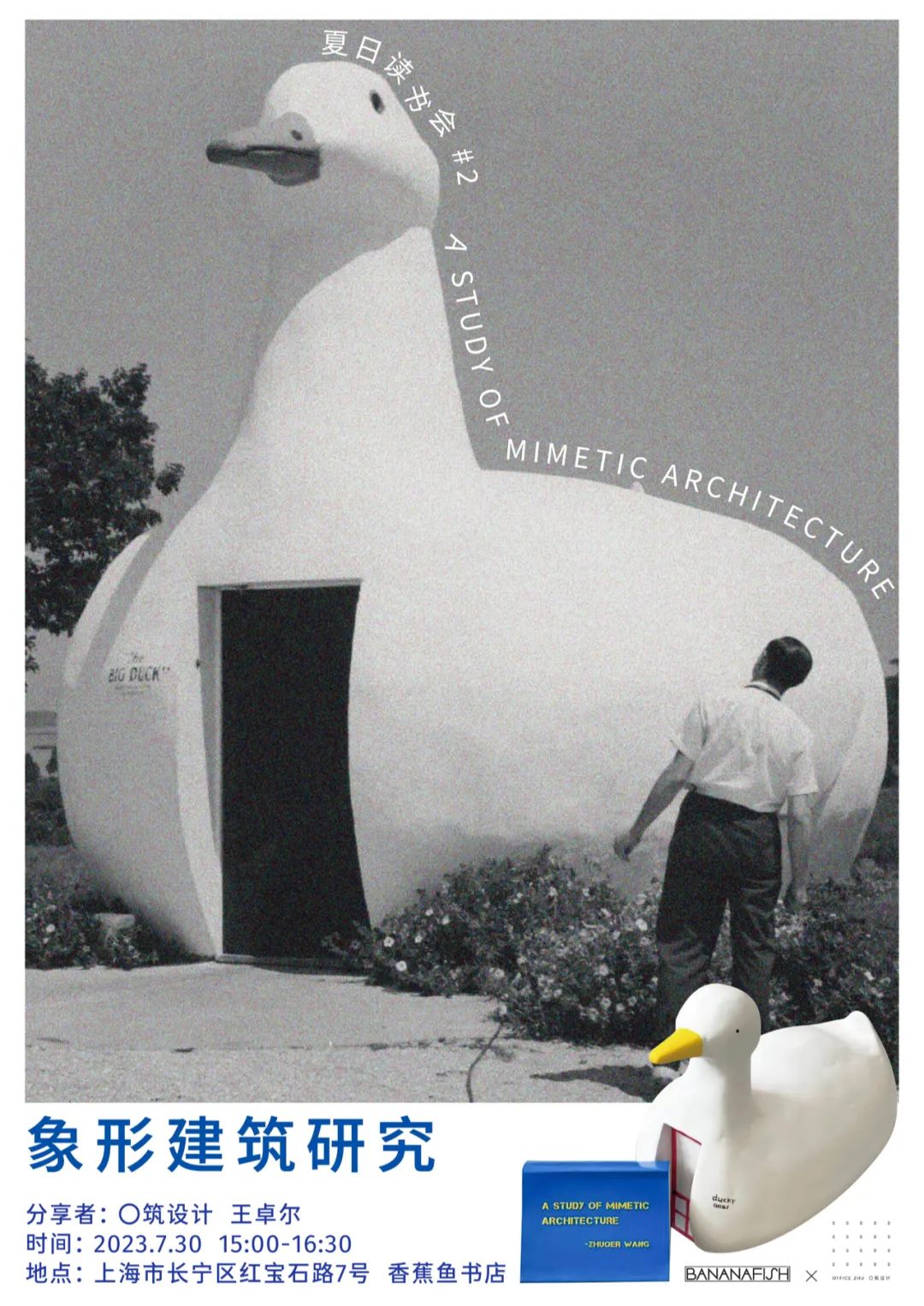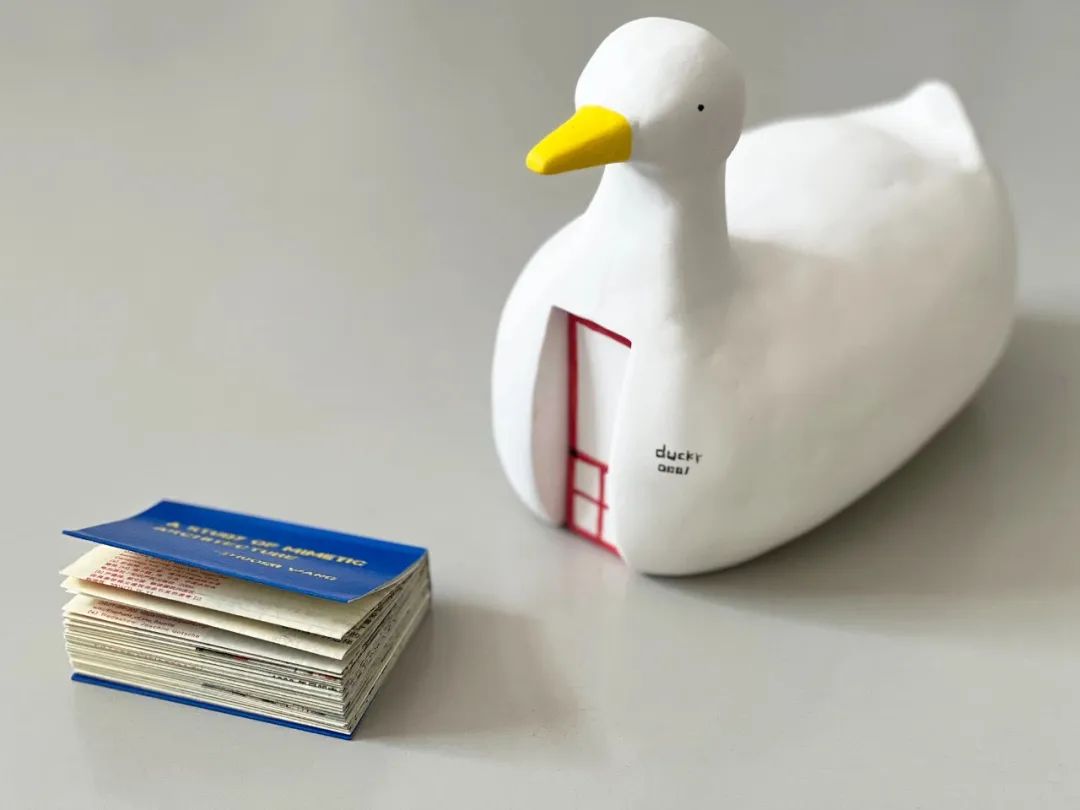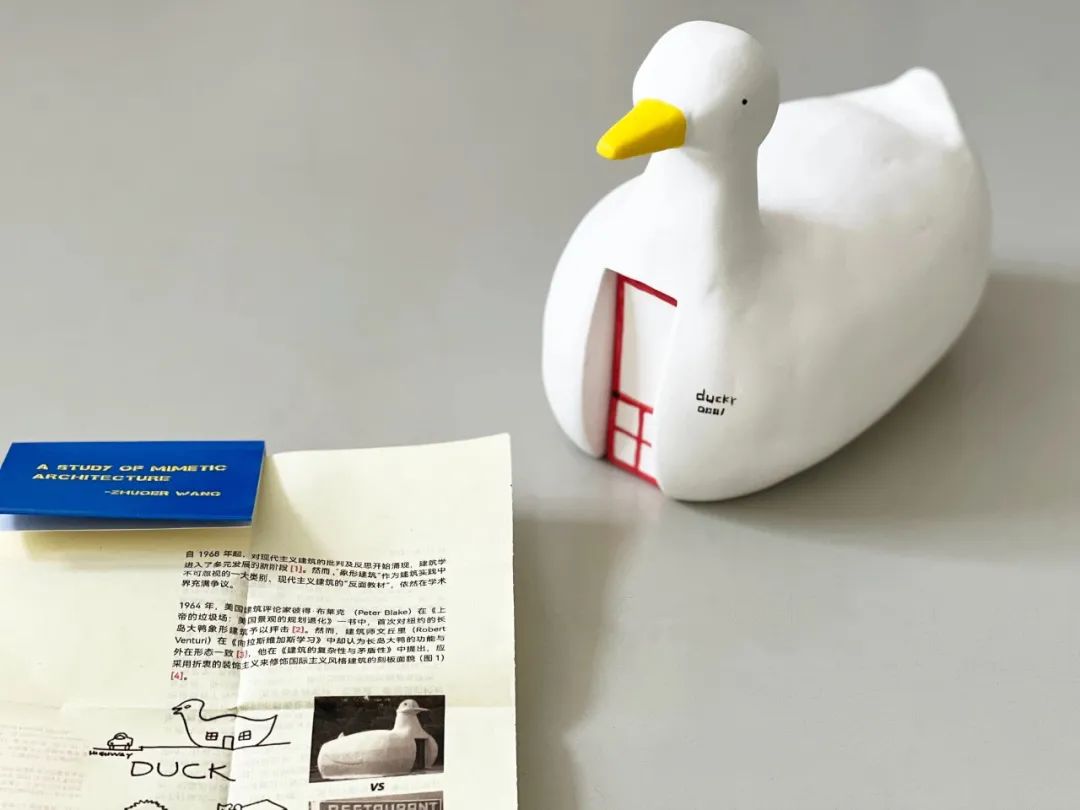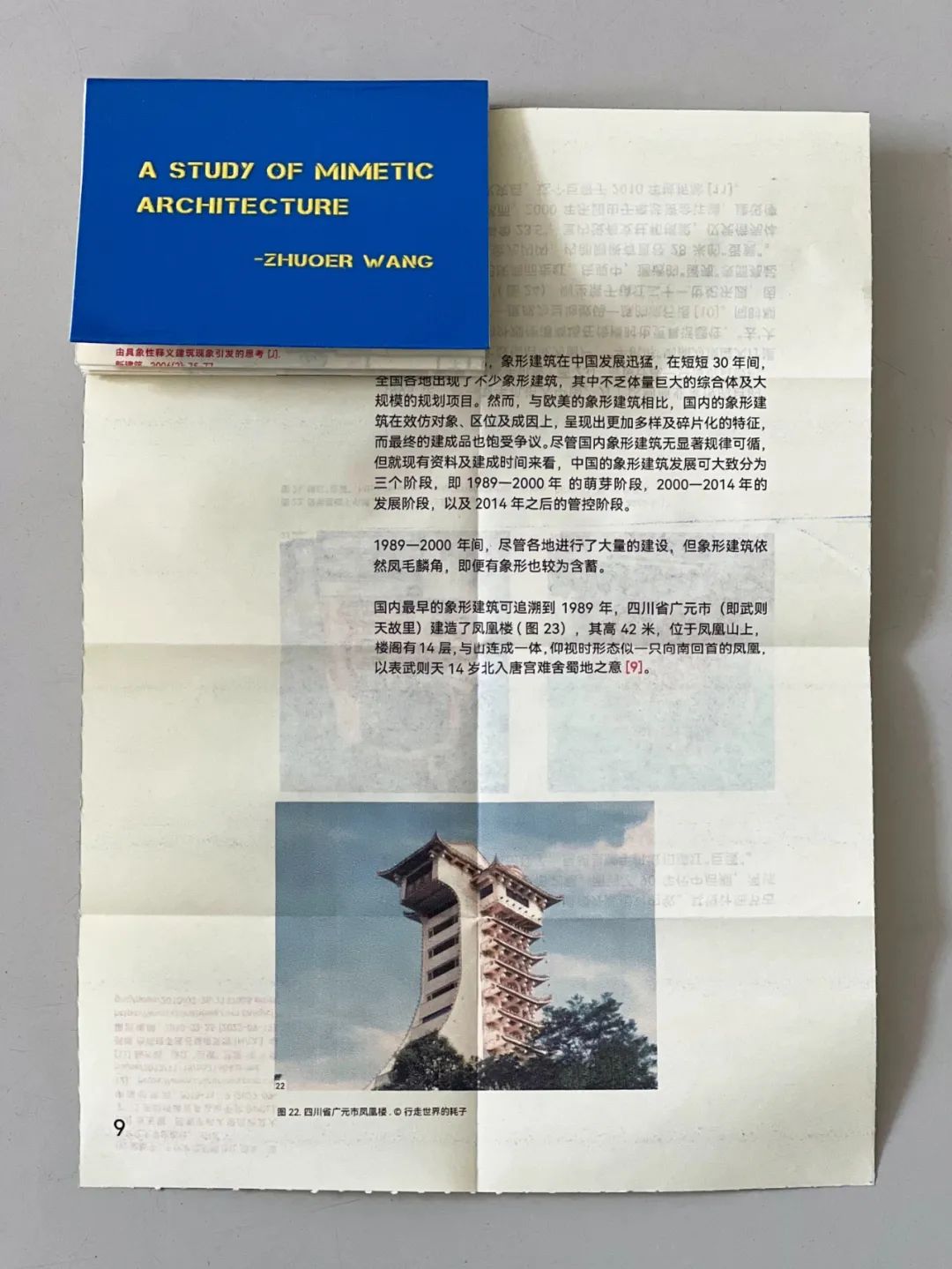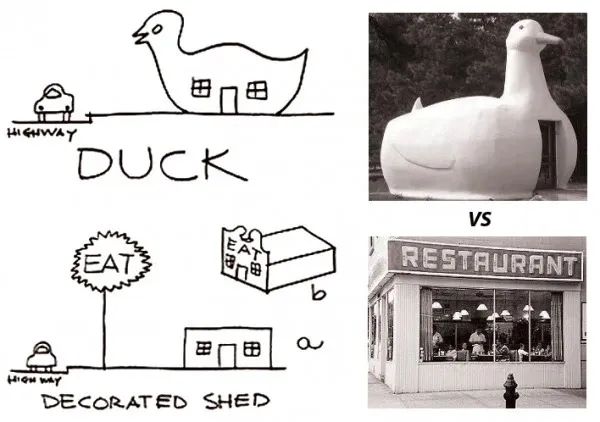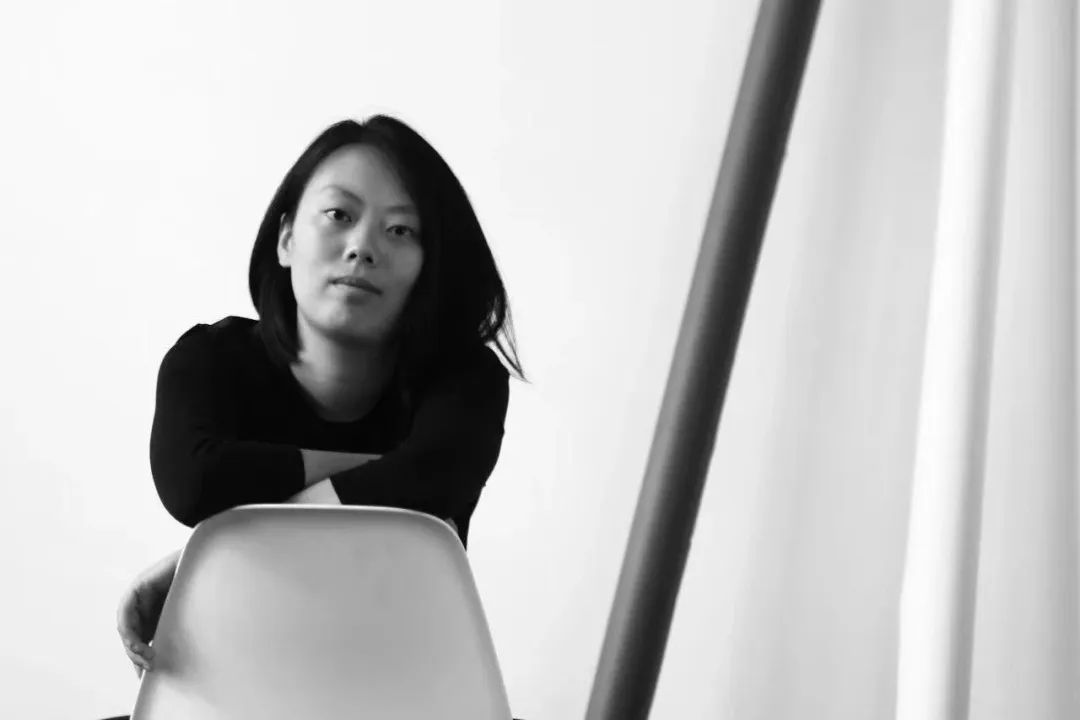Bananafish Summer Reading Club opened its second session last Sunday. This time, we had invited architect Wang Zhuoer to share her team’s self-made book titled “Pictorial Architecture Research,” which featured a duck-shaped outer shell and a blue booklet core. The book had received the Small Book Innovation Award at this year’s Shanghai Art Book Fair.
This unique and object-like book replicated the appearance of the real Long Island Duck building, echoing the theme of pictorial architecture research, and discussed pictorial architecture design through three chapters inside the booklet. Wang Zhuoer shared with us why and how she created this book, allowing us to gain insights into all aspects of this fascinating self-made book from its inception to completion.
Furthermore, during this book club session, Wang Zhuoer also introduced her writing and recommended her book “Cycling in Shanghai: Reflections on Cycling Planning,” which won the 2019 Most Beautiful Book Award in the Netherlands. She briefly discussed the slow travel system construction mentioned in the book and its production process with us.
《A STUDY OF MIMETIC ARCHITECTURE》
Is mimetic architecture a new phenomenon? Is mimetic architecture inevitably ugly? Which country is a major player in mimetic architecture? How to design mimetic architecture?
“A STUDY OF MIMETIC ARCHITECTURE” is the first research book on mimetic architecture in China.
Author Wang Zhuoer and her team start with the overlooked aspects of mimetic architecture in the mainstream architectural community. They review the global development history of mimetic architecture and evaluate “what makes good mimetic architecture” based on hundreds of mimetic architecture cases from various perspectives. Finally, they set up propositions and conduct experimental designs for mimetic architecture.
Binding Design
The Big Duck: It is a duck-shaped reinforced concrete building located in Flanders, Long Island, New York.
Due to the fact that most mimetic architecture is custom-designed and built by private owners, its eye-catching appearance and non-standard craftsmanship are its defining characteristics. Therefore, when designing the book, Zero Architectural Design intentionally adopted similar strategies to echo the content of the research.
The book consists of two parts: the duckling-shaped outer shell and the blue booklet.
The design inspiration for the outer shell comes from the “Big Duck” building mentioned in Robert Venturi’s book “Learning from Las Vegas.” It is entirely made of molded clay, with a cute appearance and an uneven surface, paying tribute to the amateur yet passionate efforts of mimetic architecture owners.
As for the blue booklet, it is made from a series of recycled materials collected by the studio, such as fabric tapes, computer invoice rolls, and model white cards. These materials are placed in an inkjet printer and repeatedly printed, then bound into booklets using a hot glue gun. Unlike mass-produced printing, each booklet here is unique and bears the marks of handmade craftsmanship.




Making the outer shell
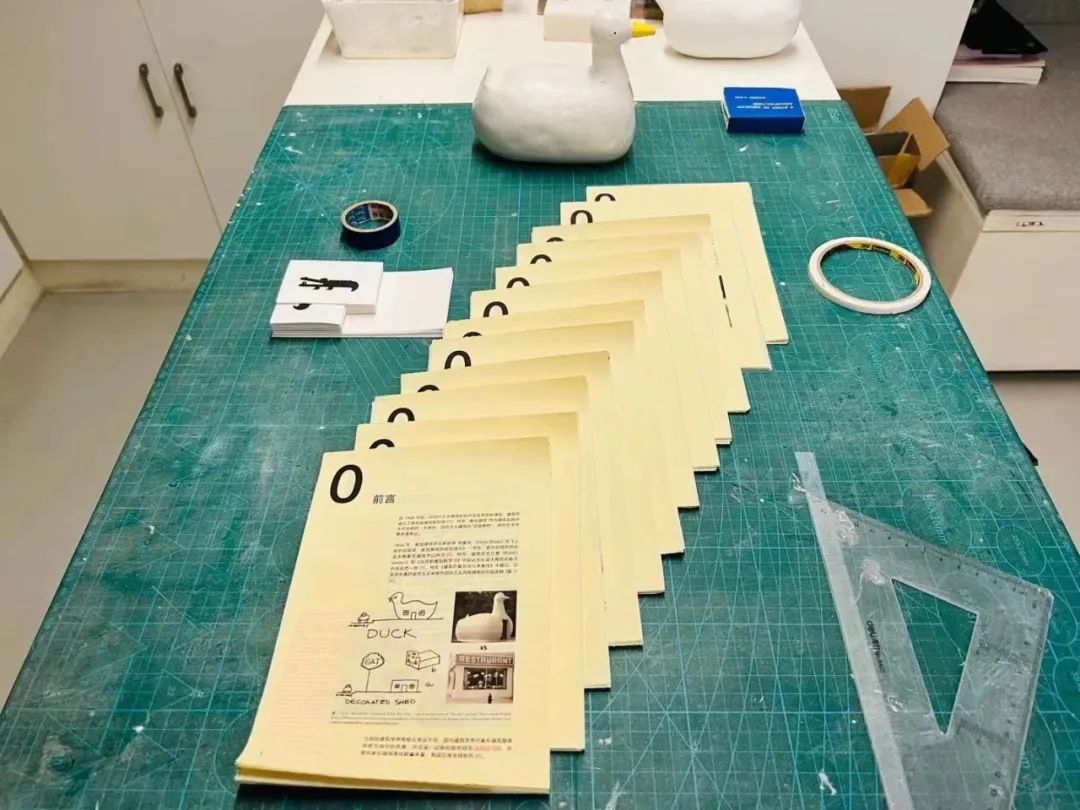

Making the little blue book
《 CYCLING@SHANGHAI A GUIDE TO CYCLE INFRASTRUCTURE》
What is the current state of cycling in the densely populated central area of Puxi, Shanghai? How does it compare to global bicycle-friendly cities, and where are its strengths and potentials? Which areas have good cycling environments, and which ones need improvement? This book conducts a systematic and comprehensive exploration to answer these questions.
This book is a city research publication that begins with a brief review of the history of cycling development. The author compares Shanghai’s cycling conditions with seven “Bicycle-Friendly Cities” worldwide, including Copenhagen, Rotterdam, Paris, Vienna, and Berlin. The book systematically analyzes the current state of cycling in Shanghai and boldly envisions the infinite possibilities that cycling can bring to the city’s public spaces through innovative designs and ideas.
Aurther and Designer Introduction
Wang Zhuoer, principal architect of Zero Architectural Design and a tutor at the School of Design, Shanghai Jiao Tong University. She graduated from the Department of Architecture at Shanghai Jiao Tong University with a bachelor’s degree in 2009, and later pursued a master’s degree in Urban Studies and Design at the Berlage Institute in the Netherlands, where she also worked before establishing her firm in 2015.
Her installation works have been invited to participate in several significant exhibitions, including the 2023 Venice Architecture Biennale, the 2022 Shenzhen-Hong Kong Bi-City Biennale of Urbanism\Architecture, and the 2017 and 2019 Shanghai Urban Space Art Season. Her architectural and interior design works have received numerous awards both domestically and internationally, such as the 2022 German Design Award, the 2020 AD100, the 2020 Italy The Plan Award, and the FA Young Architect Award. Her works have also been published in key professional journals such as “TIME+ARCHITECTURE” and prominent domestic and international media, including “gooood,” “archdaily,” and “Time Out Shanghai.”
Her publication “Riding in Shanghai: Reflections on Cycling Planning” won the 2019 Most Beautiful Book Award in the Netherlands and the 2020 Cross-Strait Most Beautiful Book Award. It has been featured in various news media outlets, including “Southern Weekend,” “Liberation Daily,” “Economic Daily,” “The Paper,” and “Youth Daily,” among other important official media.
More Photos

